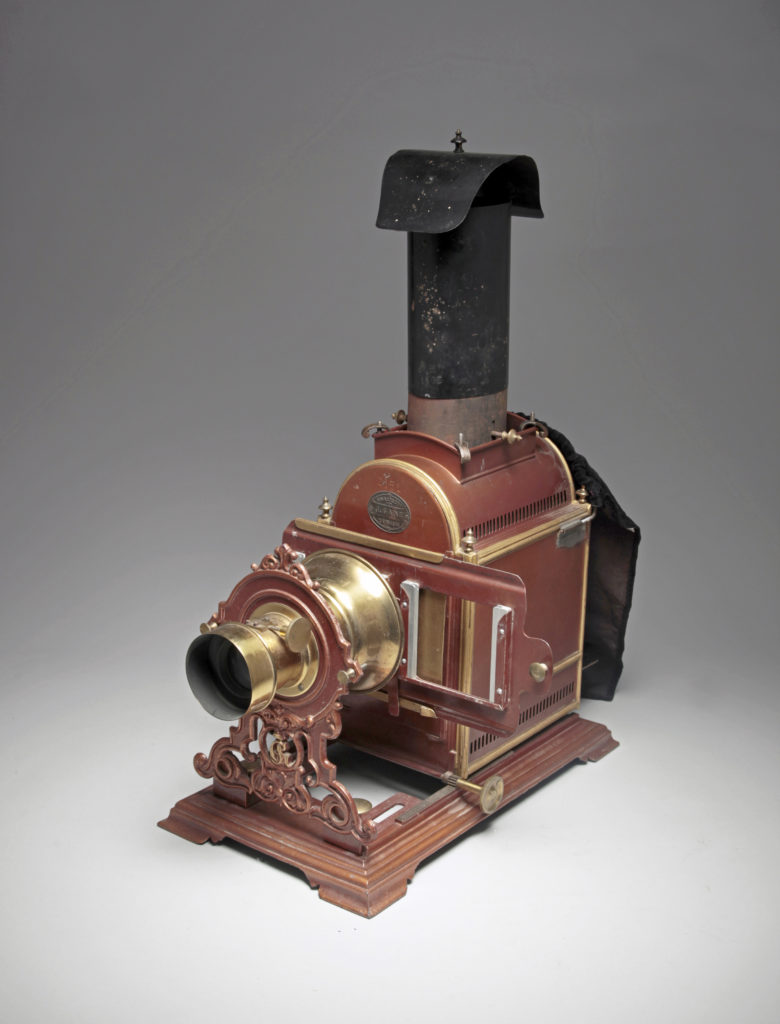Illuminated Projection Sessions
Public conferences using projections became very fashionable during the XIXth century. Many companies of a religious or laic character offered illustrated presentations, and suppliers specialised in the production of images for such conference holders. The British people enjoyed the most prestigious venue of those times: the Royal Polytechnic Institution founded in 1838 in London (Regent Street), serving as a centre both for exhibitions and for projection shows.
The English were particularly distinguished in the manufacture of the lanterns enabling the projection; it was they who devised the superimposition of two or three projectors for the fade-in fade-out or the simultaneous projection of several pictures. These projectors, in general use for public meetings, were oxyhydrogen gas lamps. From the end of the XIXth century, electric equipment arrived on the market, fitted with an arc lamp or an incandescent bulb. It was actually in 1878, a year after inventing the gramophone, that Edison succeeded in manufacturing an electric bulb, by enclosing a carbon filament in a vacuum in a bulb.


